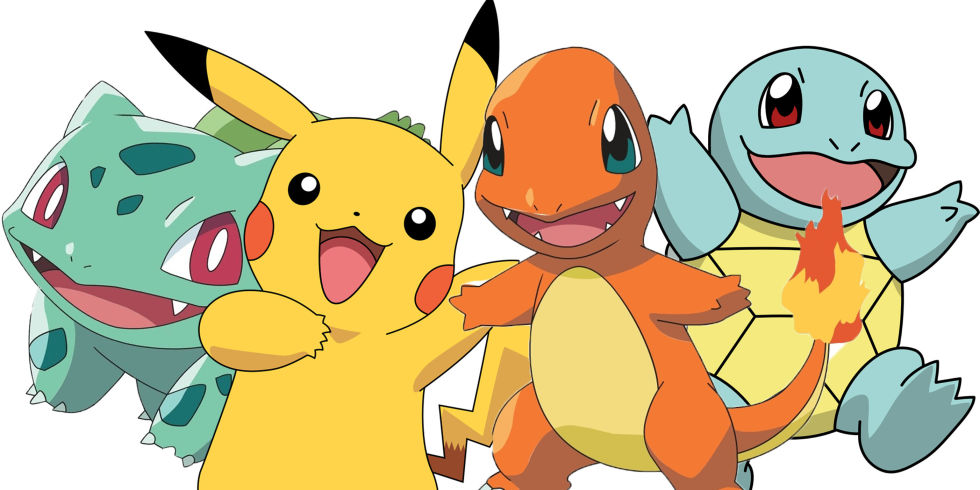It’s not that I don’t “understand” Pokémon. The problem is that I totally get it.
The long-running video game series was never meant to be a traditional form of interactive media. Unlike Madden or Street Fighter, the series isn’t wrapped around a competitive element and a central gameplay system you refine through practice. Nor is it a property like Pac-Man or Tetris, which is meant to test your reflexes, eye-hand coordination and spatial skills. It’s not even a Final Fantasy or Zelda type experience, which seeks to tell a story with a beginning, middle and end.
Rather, the Pokémon license is, has and always will be a brazen celebration of obsessive-compulsive consumerism. The tagline makes no efforts to mask this undergirding neurotic commercialism – “gotta’ catch ‘em all” is less a brand slogan than it is a Pavlovian order.
The Pokémon cash cow was pretty much built from the ground up to prey upon the budding consumerist desires of adolescents. Indeed, the multi-billion dollar juggernaut was the brainchild of Satoshi Tajiri, a game developer with diagnosed Asperger’s syndrome who said the intent of the game was to virtually capture his childhood mania for collecting insects. From there, the child-exploiting marketers at Nintendo worked their magic, releasing add-on after add-on and requiring players to “connect” with other Game Boy owners to unlock all of the game’s content. To the astute adult eye, the crass business tactic is woefully apparent: keep adding scanty content, charge parents full price for each “updated” piece of software and let the key demographic’s infantile predilection for hoarding virtual goods drive franchise sales skyward. At heart, it’s little more than a pay to play scheme, with the added sleaziness of directly targeting elementary and middle school clientele.
This is nothing new in the world of child-targeted marketing, of course. The Pokémon ploy is really no different than the ones employed by baseball trading cards or Beanie Babies or those Skylanders toys. But with the advent of Pokémon GO, the franchise has taken a sharp turn into uncharted territory – and the marketing masterminds behind the property no doubt have a very, very specific endgame in mind.
In advertising-speak, there are these things called “fixed mediums.” Basically, these are forms of media that exist exactly as is and can’t be changed once produced – i.e., books, magazines, newspapers, movies, video games, television series, albums, etc. From a marketing standpoint, these are problematic, because they allow for a finite, concrete number of advertising opportunities. If you want to promote something, you have to get it in there during the media production process or else you lose your opportunity to pander … I mean, raise brand awareness.
“Fluid mediums,” however, present far more flexible advertising opportunities. Basically, if something is connected to the Internet, it has potential to be a furtive advertising platform. Until very, very recently, however, marketers weren’t afforded the luxury of contextual, individualized marketing opportunities. But then, along came the iPhone and its location tracking services, and the floodgates, they doth opened.
POKEMON GO! … while they watch
According to a 2015 Digital Trends report, the average American spends nearly five hours a day staring at his or her smartphone or tablet. Unsurprisingly, Common Sense Media found that teenagers had their faces glued to their phones even longer, with a 2015 report determining that lower-income youths spend upwards of six hours a day on their Internet connected mobile devices. If you are a marketer, you couldn’t dream of a better situation – not only do you have a platform to pimp your goods and services that has eyes on it all times, you now have the ability to customize your advertising pitch depending on the app data provided by the consumer in question.
When it isn’t generating poison gas monsters at Holocaust museums or facilitating armed robberies, the hyper-popular Pokémon GO app is sending a staggering amount of personal data back to developer Niantec, Inc. and Google. While you are criminally trespassing and risking life and limb to roll a PokéBall at a Jigglypuff, the app can record everywhere you go, every website you look up and as long as you have the tracking feature on, practically everything you do even when you aren’t playing the game.
If you are wondering how Niantec, Inc. profits off a “free” game, that explains it – according to a 2013 report, mobile carriers alone made nearly $10 billion selling their customers’ “user data behavior” records to third parties.
I’ve always found it weird that so many people are fearful of the NSA “Orwellian” state when frankly, we all voluntarily give up more personal privacy to Facebook and Twitter, anyway. And making things worse, there is no legal bulwark to protect consumers from having their individual information – not just their telephone numbers and emails, but details about their purchasing habits and which brick and mortar retailers they frequent – sold to other people.
POKEMON GO! … and collect personal data for money
Pokémon Go, fundamentally, takes this “personal data = profits” strategy to the next level. Now, advertisers, research firms and other tech companies know not only where you go, but who you are hanging out with, what time you get there, how long you stay, and through the wonderful advent of eye tracking software, exactly what is in your direct field of vision at any given time. If the government had access to any of that information, it would be a clear cut violation of the Fourth Amendment. But if you agree to the terms and conditions of a private company, though … there ain’t nothing you can do about it, Holmes.
Advertisers have tried to harness the full potential of “augmented reality” driven marketing for years, and with Pokémon GO saturating the American consciousness the way it has, “AR-vertising” finally has a much-prayed-for beachhead. Retailers, manufacturers and service providers would no doubt spend beaucoup bucks to have their brands promoted on a platform they know for a fact the target audience is directly looking at, with a mechanism in place to monitor their reaction to advertisements in real-time. Outside of finding a way to read people’s minds, that’s about as deep inside the psyches of individuals as marketing researchers can possibly get.

Sure, it might be fun lollygagging about taking pictures of Squirtles and patting yourself on the back for walking a whole block as if you had just finished a triathlon, but the latest and greatest Poké-craze isn’t about fun and games. Strip away the Pikachus and Charizards and all you have is yet another consumer-exploiting scheme, designed to nickel and dime you through an inevitable avalanche of premium downloadable content, wrest your user data from you for financial gain and give advertisers yet another venue to bombard us with their nigh-inescapable mega-capitalist propaganda.
The cheery clickbait about the game promoting “exercising” and “socializing” is just flat out malarkey. The real story here is just how willing we are to sacrifice our privacy and hop aboard a prefabricated “cultural movement” without carefully considering its collateral consequences. That the under-18 crowd has done so without hesitation is horrifying enough – that 30- and 40-year-old adults choose to do so, however, makes me seriously question where our society is headed in the future.
The Romans may have had their bread and circuses, but it’s nothing compared to our Wi-Fi and Pokémon. For the want of mere amusement, not only will we let perfect strangers know virtually everything there is to know about ourselves (and even worse, our own children), we’re totally OK with them profiteering off it in the process.
Sorry, Pokémon enthusiasts, but I wouldn’t be so gung-ho about your new pastime. After all, it’s playing you more than you are playing it.







Comments 1